Voyager 1 is a space probe launched by NASA on September 5, 1977, as part of the Voyager program to study the outer Solar System and the interstellar space beyond the Sun’s heliosphere. Launched 16 days after its twin, Voyager 2, it communicates through the NASA Deep Space Network (DSN) to receive routine commands and to transmit data to Earth. NASA and JPL provide real-time distance and velocity data.
As of December 2024, it is the most distant human-made object from Earth at a distance of 166.28 AU (24.9 billion km; 15.5 billion mi). The probe made flybys of Jupiter, Saturn, and Saturn’s largest moon, Titan. NASA had the option of either doing a Pluto or Titan flyby; exploration of the moon took priority because it was known to have a substantial atmosphere. Voyager 1 studied the weather, magnetic fields, and rings of the two gas giants and was the first probe to provide detailed images of their moons.

As part of the Voyager program and like its sister craft Voyager 2, the spacecraft’s extended mission is to locate and study the regions and boundaries of the outer heliosphere and to begin exploring the interstellar medium. Voyager 1 crossed the heliopause and entered interstellar space on August 25, 2012, making it the first spacecraft to do so. After two years, the Voyager 1 spacecraft started encountering a third series of coronal mass ejections from the Sun that continued to at least December 15, 2014, further confirming that the probe is in interstellar space.
In 2017, the Voyager team successfully fired the spacecraft’s TCM thrusters for the first time since 1980, allowing the mission to extend an additional two to three years. Voyager 1’s extended mission is anticipated to continue sending back scientific data until, at the minimum, 2025, and could last until 2030, at its longest. Its RTGs may be able to provide enough electric power to return engineering data until 2036.
Mission background
History
A 1960s plan for a Grand Tour to examine the outer planets prompted NASA to initiate a project in the early 1970s. Knowledge acquired by the Pioneer 10 spacecraft enabled the engineers to design Voyager more capable of tolerating the powerful radiation surrounding Jupiter. However, at the last minute, kitchen-grade aluminum foil strips were placed on some of the cables in order to improve the radiation protection.
Voyager 1 was originally designed as Mariner 11 of the Mariner program. Budget cuts reduced the mission to a flyby of Jupiter and Saturn and renamed the mission the Mariner Jupiter-Saturn probes. The name was changed to Voyager when the probe designs began to differ substantially from Mariner missions.
Spacecraft components
Voyager 1 was constructed by the Jet Propulsion Laboratory (JPL). It has 16 hydrazine thrusters, three-axis stabilization gyroscopes, and referencing instruments to maintain the probe’s radio antenna pointing toward Earth.
Collectively, these instruments are part of the Attitude and Articulation Control Subsystem (AACS), along with redundant units of most instruments and eight backup thrusters. The spacecraft also included 11 scientific instruments to study celestial objects such as planets as it travels through space.
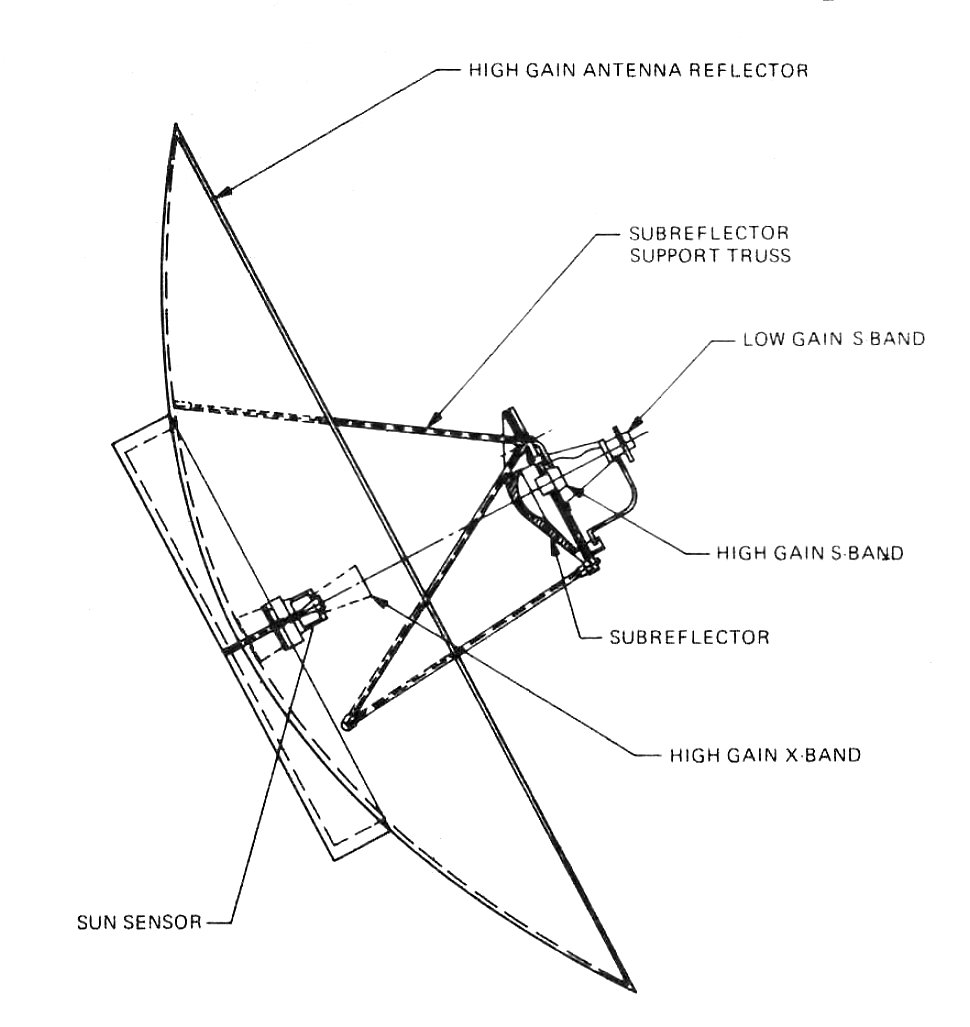
Communication system
Voyager 1’s radio communication system was developed to be utilised up to and beyond the limits of the Solar System. It carries a 3.7-metre (12 ft) diameter high-gain Cassegrain antenna for the transmission and reception of radio waves through the three Deep Space Network stations on the Earth. The spacecraft normally transmits data to Earth over Deep Space Network Channel 18, using a frequency of either 2.3 GHz or 8.4 GHz, while signals from Earth to Voyager are transmitted at 2.1 GHz.
Plot 1 is viewed from the north ecliptic pole, to scale.
Plots 2 to 4 are third-angle projections at 20% scale.
In the SVG file, hover over a trajectory or orbit to highlight it and its associated launches and flybys.
When Voyager 1 is unable to communicate with the Earth, its digital tape recorder (DTR) can record about 67 kilobytes of data for later transmission. As of 2023, signals from Voyager 1 take more than 22 hours to reach Earth.
Power
Voyager 1 carries three radioisotope thermoelectric generators mounted on a boom. The MHW-RTG consists of 24 pressed plutonium-238 oxide spheres. At launch, the RTGs produced approximately 470 W of electric power, with the remainder being waste heat. The power output of the RTGs degrades with time because the fuel has a half-life of 87.7 years, and the thermocouples deteriorate, but they will keep supporting some of its operations till at least 2025.
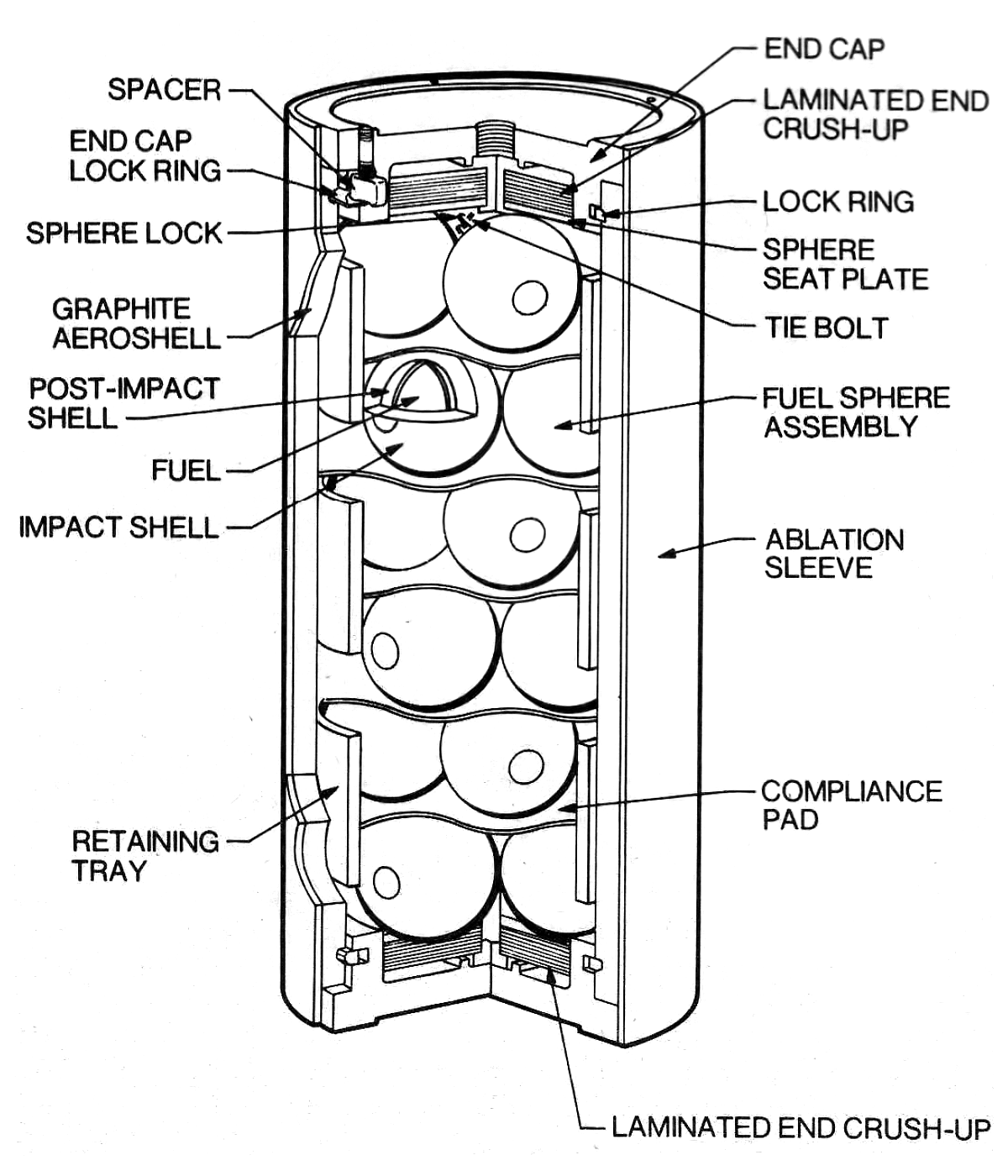


Computers
Unlike all other instruments on Voyager, the cameras for visible light are not autonomous; they are commanded from a parameter table in one of the spacecraft’s digital computers, the Flight Data Subsystem (FDS). Nearly all space probes have been launched since the 1990s with entirely autonomous cameras.
The cameras are controlled by the computer command subsystem (CCS). The CCS contains fixed computer programs such as command decoding, fault-detection and fault-correction routines, antenna pointing routines, and spacecraft sequencing routines. This computer is an upgraded version of the one used in the Viking orbiters of the 1970s.
The Attitude and Articulation Control Subsystem, or AACS, controls the spacecraft’s attitude. It ensures the high-gain antenna remains pointed at Earth, governs changes in attitude, and points the scan platform. AACS systems built for each Voyager are identical.
Scientific instruments




Mission profile
Timeline of travel

Flyby of Jupiter
Voyager 1 started photographing Jupiter in January 1979. At the closest approach, Voyager 1 was on March 5, 1979. Voyager 1 passed Jupiter at approximately a distance of 349,000 kilometers (217,000 miles) from the Jupiter’s center. Due to the better photographic resolution achievable at closer proximity, most of the observations related to the moons, rings, magnetic fields, and the environment of the Jovian radiation belt were accomplished during the 48-hour time frame that encompassed the closest approach. Voyager 1 completed photography of the Jovian system in April 1979.

Voyager 1 · Earth · Jupiter · Saturn · Sun
The discovery of ongoing volcanic activity on the moon Io was probably the greatest surprise. It was the first time active volcanoes had been seen on another body in the Solar System. It appears that activity on Io affects the entire Jovian system.
Io appears to be the primary source of matter that pervades the Jovian magnetosphere – the region of space that surrounds the planet influenced by the planet’s strong magnetic field. Sulfur, oxygen, and sodium, apparently erupted by Io’s volcanoes and sputtered off the surface by the impact of high-energy particles, were detected at the outer edge of the magnetosphere of Jupiter.
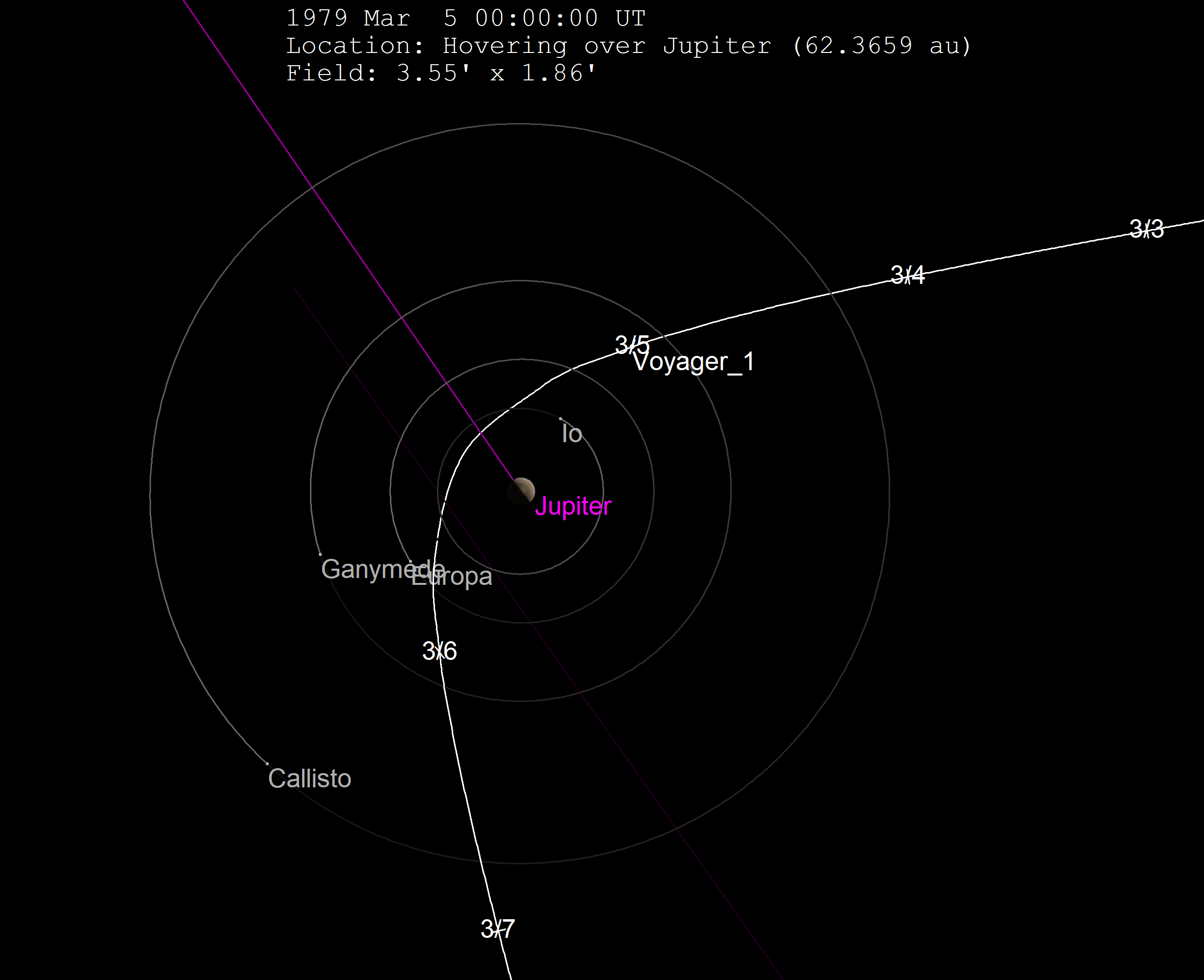
The two Voyager space probes made a number of important discoveries about Jupiter, its satellites, its radiation belts, and its never-before-seen planetary rings.
Voyager 1 time-lapse movie of Jupiter approach (full-size video)



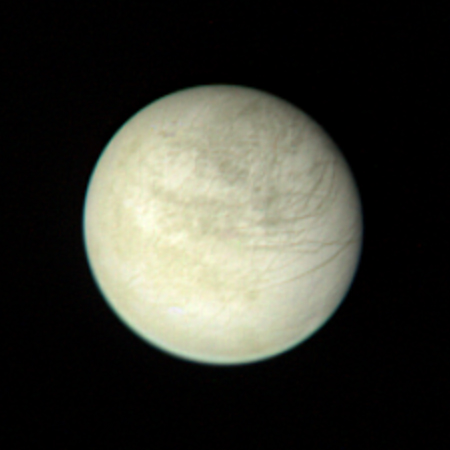
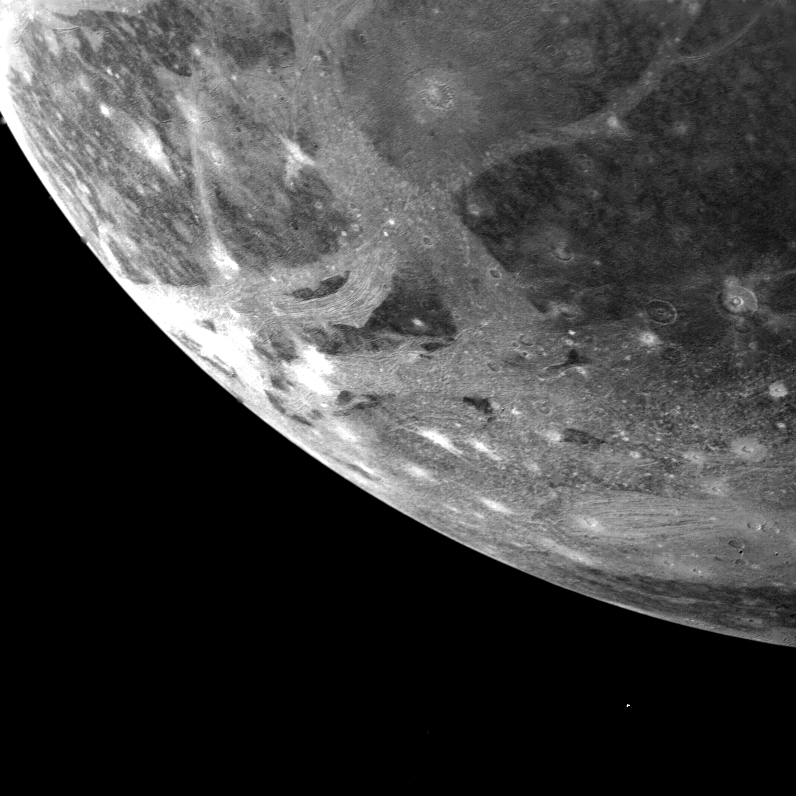
Continue in the Next Part
Latest Updates
















 Let’s imagine, explore, and uncover the mysteries together!
Let’s imagine, explore, and uncover the mysteries together!